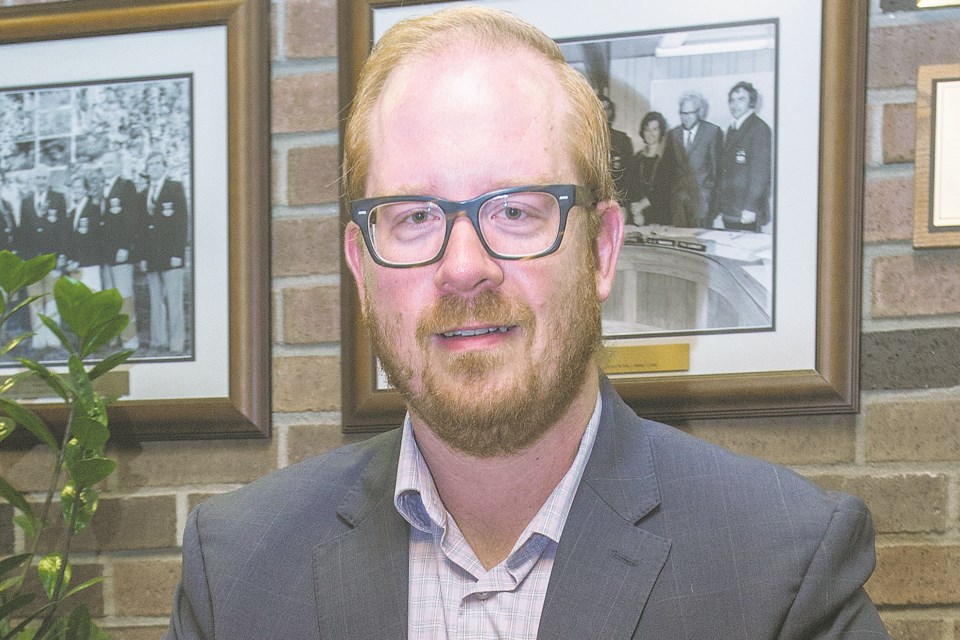Correction
St. Albert's contribution under a memorandum of understanding with Active Communities Alberta would be $20 million.
A proposed non-profit-run rec facility in St. Albert could cost residents less per month than a Starbucks coffee, if Active Communities Alberta (ACA) is able to maintain the momentum the organization has built over the past few years.
On Monday, ACA held an open house to bring residents up to speed on their progress, and present next steps.
ACA president Matt Bachewich said there was “a real positive vibe” in the room and lots of desire to move ahead, with just over 80 people in attendance.
“There's a real belief in the benefits the non-profit model can offer, especially when it comes to saving taxpayers millions of dollars over the lifetime of the facility,” he said.
ACA has a memorandum of understanding in place with St. Albert that if the non-profit can raise the remaining funding for a $42-million facility, the city would contribute $10 million.
Last month, city council zeroed in on a location for a future rec facility, accepting a 59-acre land donation from Rohit Land Development, north of the Lakeview Business District.
Operating models for recreation facilities can range from 100 per cent municipally run, such as Servus Place, to completely private-run, and Bachewich said the non-profit model is a “happy medium.”
Erin Ridge resident John Liston attended the open house and said raising two children active in hockey and ringette meant the family had to “drive all over hell’s half-acre” to try and find ice.
Bottom line, a shortage of ice exists in St. Albert, he said.
Liston said he found it interesting that the majority of rec facilities in Calgary are run by non-profits and was intrigued by the idea.
“Everything would indicate to me that you would have quicker, better decisions made around profitability when your survival depends on it,” Liston said. “Whereas if you can just raise taxes or kind of bury the expenses in a city budget, it's harder for someone to make the tough decision.”
The founder of Edmonton’s non-profit Saville Community Sports Centre, David Dorward, was at the open house to provide perspective from an up-and-running facility based on the same model ACA would run.
Saville opened in 2011, and was borne out of partnerships with local sports organizations, the University of Alberta and support from all three levels of government.
Dorward spoke with the Gazette about some of the nuances of a non-profit run facility, saying they have the ability to be more “nimble.”
He added a major lesson through the process was not to allow challenges to stop you, but rather to see them as opportunities.
As an example, he pointed to when the board of the facility – then called the GO Community Centre – was trying to secure provincial funding but was told no mechanism exists to fund capital projects outside the bounds of municipalities.
Through working with the provincial government, Dorward said they found a solution through the use of Alberta lottery funds and were successful in securing a grant from the Community Facility Enhancement Grant program (CFEP).
“The message is, don't allow challenges or difficulties to stop you,” he said. “That's an opportunity to find a solution to the problem you're presented with.”
On Thursday, the Alberta government dropped its 2020 budget, and there is no mention yet of funding for ACA's project, although recipients of 2020 CFEP funding have not been announced yet.
Bachewich said ACA will “continue to pound the rock” and make the strongest case possible to ensure the project moves forward “for the benefit of everyone.”
As a result of Saville’s success, Dorward said he has met with up to 30 groups seeking similar guidance to ACA.
Bachewich’s group is within the top four per cent, he said, in terms of “having their act together.”
He added the secret sauce to a well-run non-profit rec facility is “patience, perseverance and professionalism” on the capital side. Operationally, the key is to have good people working for you.
Design options and cost
With 59 acres to potentially work with at the site identified by St. Albert for a future recreation facility, Bachewich said there is “substantial potential for the site.”
The base design proposed by ACA is a $42-million facility, including two rinks and a 20,000-square-foot gymnasium.
Increasing the number of rinks to four and including a 50-metre, eight-lane aquatics facility could bring the price tag up to $92 million. But Bachewich said there is also the possibility to do a phased-in approach, similar to how Servus Place was constructed.
During his presentation, Bachewich went over financing options for St. Albert’s proposed $20-million contribution to the base model, and said the window is now to start building.
If St. Albert were to take out a 20-year loan at today’s borrowing rates (2.45 per cent), that would result in annual payments of $1.27 million. Bachewich noted with payments ceasing on Servus Place after 2024, that could free up some money to put toward this new facility.
He added when money was loaned for Servus Place, the rates were much higher than today’s, at 4.83 per cent.




